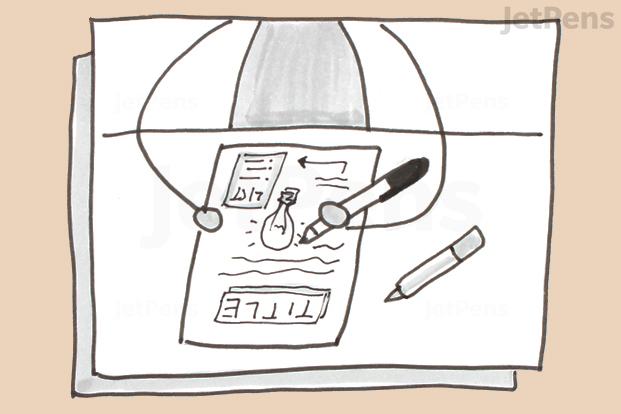A Guide to Visual Note-Taking
Step 1: Listening and Experiencing

Listen closely for key points.
Be alert! If you are attending a meeting or conference, take note of lists, famous quotations, or items that the speaker repeats. If you are using sketchnotes to record personal experiences like travels, observe sensory details like sight, smell, or sound.
Step 2: Processing

Process content and only record important material.
Don’t write down everything-- instead of taking verbatim notes, process the content and only write the most important material. It is better to fully take in one major point, rather than frantically scribble many lesser ones. During this step, think of yourself as a thought curator.
Step 3: Writing

Write quickly and keep your letters consistent.
Start writing. Your handwriting should be fast, but legible. Use abbreviations when necessary, and keep your letter size consistent so the emphasis points can stand out. Remember that sketchnotes do not have to follow a linear order, so you can use any part of the page. When relevant, add your own responses or thoughts on the topic.
Step 4: Visualizing

Add visual elements like boxes, arrows, and images.
You don’t have to be good at art to add visualizations to your sketchnotes. During down time or pauses in the presentation, add shapes, lines, and symbols to the most important sections. This act of revisiting uses visual cues to help cement the concepts in your mind. Then, use shading to add depth.
Source:
0 Comments